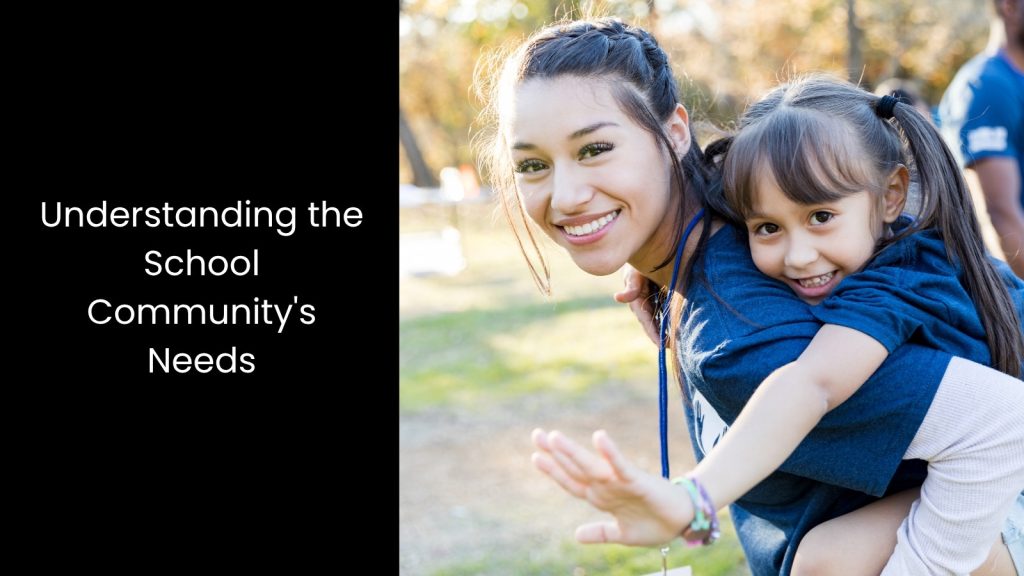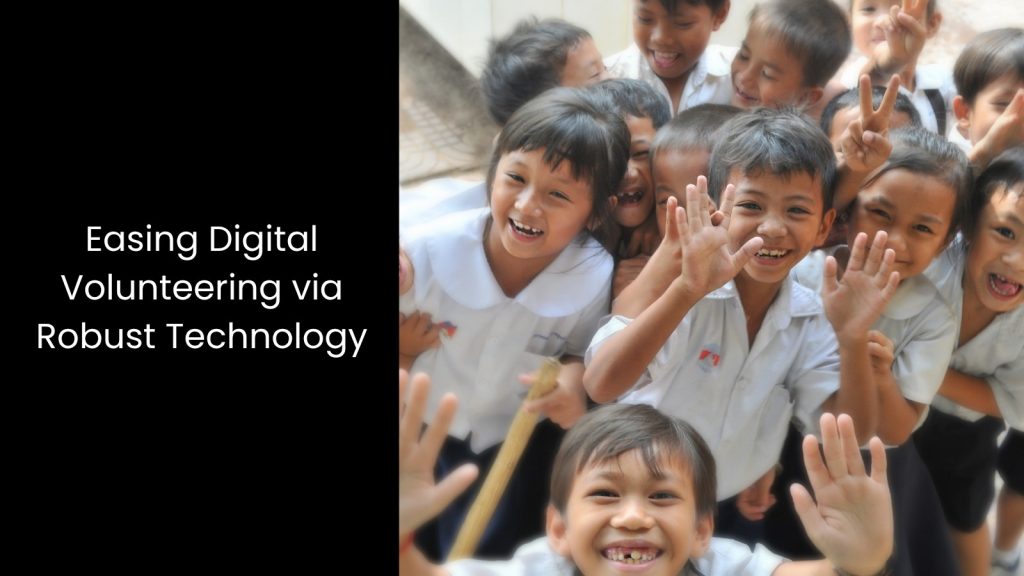Digital volunteering opens the door for anyone with a computer and internet access to give back in powerful ways. In education, it now stands as a strong solution for schools needing extra hands, fresh ideas, or focused support. Can you guess the real beauty of it? You do not need to be in the same city or even the same time zone to help. As remote options grow, more people ask how to contribute to a school community without being there in person. From virtual tutoring to digital content creation, there is room for many kinds of support.
This article explores the many roles digital volunteers can take on and how to contribute to a school community remotely.
We discover
Why Digital Volunteering Matters?

- It gives people a real chance to make a difference even when they cannot be there in person.
- If you run a school, you are aware that schools tend to need extra hands. When someone chooses to support school remotely, they help fill in the gaps, whether it is helping a student understand math or giving a teacher time to catch up on lesson plans.
- Not everyone can walk into a classroom, but anyone with a computer and the right purpose can engage with schools from home. These volunteers bring unique skills and ideas that schools might not easily find nearby.
- So, yes, with more people jumping in online, schools get stronger, more connected support, and every bit of help adds up in meaningful ways.
Understanding the School Community's Needs

- What we see in the contemporary education system is that teachers design engaging lessons, students stretch their minds, parents balance busy schedules, and staff manage endless tasks; still, many hands fall short.
- Classrooms appreciate tutors who explain tough equations or proofread essays, while admin offices smile when volunteers sort files or track attendance online. Students light up when mentors chat about real-world paths and paint pictures of future careers.
- Parent groups celebrate fresh posters, blogs, and videos that volunteers craft to promote events or share success stories. Content creators also update social platforms, keeping the community informed and excited. Remote helpers can schedule fundraisers, coordinate science fairs, or build interactive quizzes, and they do it all from a laptop.
- These actions remove pressure, add creativity, and spark confidence across the campus. Curious people who explore ways to contribute to a school community remotely discover countless chances to turn spare minutes into visible progress for every stakeholder and watch spirits soar.
Top Ways to Contribute to a School Community Digitally

Online Tutoring and Homework Help
Online tutoring creates a direct and simple way to help students stay on track. Schools often face a shortage of one-on-one support, and teachers cannot always give every student the extra time they need.
That is where remote volunteers step in.
With a steady internet connection and patience, volunteers can walk students through homework problems, explain confusing lessons, or offer practice in tricky subjects like math or reading. These sessions do not have to last hours; even short calls a few times a week can build a student’s confidence.
Teachers can share lesson goals with volunteers, and volunteers can then support those goals with extra explanation or examples. This teamwork helps students feel seen and supported without adding more pressure on staff. Parents also notice the difference when students suddenly enjoy doing homework they once avoided.
When schools organise tutoring help with clear schedules and safe platforms, they create meaningful learning experiences beyond the classroom walls.
Virtual Mentoring and Career Talks
Mentoring online opens doors that students might not even know exist. Many students wonder what comes after graduation, and mentors can give those answers in a relaxed, real-world way. Volunteers can share career stories, show how they use school subjects in daily work, or answer questions about university life or different trades.
These talks help students dream bigger and plan smarter. Schools can schedule virtual sessions where mentors speak to whole classes or smaller groups based on interests. This option becomes extra helpful in communities where students do not always have access to professionals in different industries.
Further, teachers can invite mentors to link lessons to careers, making school feel more useful and exciting. Even a short 20-minute talk can change how a student sees their future. This way, remote mentoring and career sharing stand out as powerful ways to contribute to a school community remotely, especially when schools match students with volunteers who have lived experience and useful insights.
Assisting with School Newsletters and Content Creation
Creating content like newsletters, blog posts, or classroom updates takes time, and teachers already juggle enough. That is where digital volunteers can jump in and truly take some weight off.
Many schools try to keep parents and students updated, but busy schedules make it hard to keep that content fresh and engaging. Volunteers who enjoy writing, editing, or graphic design can take those updates and give them a voice. They can write school news in plain, friendly language, add colourful images or student quotes, and make each issue something families want to read.
On the other hand, some can even translate content into other languages if needed. Schools might also want help designing flyers, banners, or infographics for online sharing. These efforts do not just make school communication better; they also build a stronger connection between families and the school community.
Among all the ways to contribute to a school community remotely, this one boosts visibility, trust, and engagement in a big way. Volunteers work on flexible schedules, often just needing shared files and clear guidelines.
With consistent support, schools begin to notice fewer communication gaps, stronger parent interest, and even increased attendance at events.
Remote Event Planning and Fundraising Support
Every school runs events like book fairs, talent shows, and parent nights. However, not every school has enough hands to plan them all. That is where remote volunteers can seriously help.
With the right tools, people can handle many planning tasks online, from setting up schedules and managing RSVPs to designing posters and handling donations. Volunteers can brainstorm themes, find suppliers, or reach out to local businesses for support. Even if someone lives far away, they can still create online event pages, manage email campaigns, or track fundraising goals.
Many families want to help, but cannot always come in person. Giving them the option to assist digitally opens new doors for support. Schools that use this method start to see smoother events and better turnout. It also brings in more ideas and resources without crowding the office.
So, among the best ways to contribute to a school community remotely, event planning stands out because it mixes creativity with real impact.
Social Media and Website Management
Most schools want to stay active online but find it hard to post regularly or update their websites. Is yours one of them?
We know that teachers and staff already focus on the classroom, so keeping up with digital platforms becomes just one more thing on a long list. Volunteers who understand social media, blogging, or website design can turn this into a win. They can post event reminders, share student work (with permission), or keep calendars current.
Likewise, a strong online presence helps the whole school shine; it keeps parents informed, celebrates achievements, and even attracts support from the wider community. Volunteers can schedule posts, update announcements, or design visuals that bring more attention to school activities. This does not require fancy software, just coordination and clear communication.
When schools think about ways to contribute to a school community remotely, managing digital spaces gives huge returns. It also keeps families connected and excited about what is happening at school.
Creating Learning Materials or Videos
Learning feels smoother when the right materials back it up. Teachers may want extra worksheets, simple explainer videos, or visuals that make lessons click. However, they do not always have time to make them.
This is where the digital volunteers can jump into this space and create things that save teachers hours.
Some volunteers might enjoy making short videos that walk through math steps or science facts. Others might build worksheets, slide decks, or games that support what students learn in class. These materials do not have to be fancy; they just need to be clear, useful, and fun.
Moreover, volunteers can follow school guidelines and match lesson themes, which helps students feel more supported at home and in class. Schools that explore this as one of the smart ways to contribute to a school community remotely often see better lesson engagement and stronger homework results. Parents also feel thankful when extra materials help their kids catch up or go further. Teachers can even build small libraries of these resources to use year after year.
When digital helpers create learning tools with care and creativity, they do more than assist; they make learning easier, more visual, and far more enjoyable for students of all levels. What do you think?
Easing Digital Volunteering via Robust Technology

With the right School Management System, digital volunteering becomes easier, smarter, and more impactful. From coordinating schedules to tracking engagement, the platform simplifies every step. Schools can connect with volunteers anywhere, anytime, without extra admin stress. If your school wants to explore meaningful ways to involve the wider community remotely, it is time to invest in technology from an expert who supports and scales digital support.

